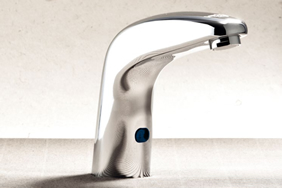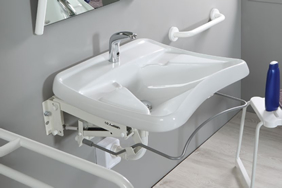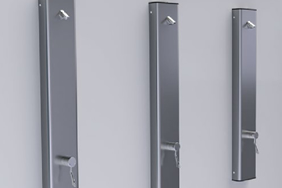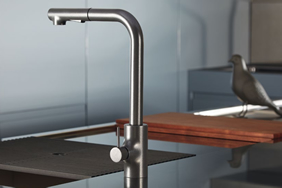
The CE marking graphic symbol (acronym for 'European Conformity') was created in 1993 and guarantees the consumer or user safe products that comply with European standards. From a legal point of view, the 'CE marking' is an acronym by which the manufacturer indicates that the product complies with the applicable requirements set out in the EU harmonisation legislation providing for its affixing. It is valid within the European Economic Area (EEA) which includes the countries of the European Union and the 3 EFTA countries (Norway, Iceland and Lichtenstein).
The procedure to put the CE marking on your product varies depending on the type of product and its intended use because not all products are required to have European Conformity. The CE marking is only placed on products for which there is a Community directive and for which its affixing is required by specific Community legislation. The primary purpose is to prevent users and consumers from being exposed to even serious risks when using products and equipment (e.g. toys, machines, medical devices, ...).
Taps and fittings come under European legislation for construction products (EU Regulation No. 305/2011). This regulation covers all products that are made to become a permanent part of construction works. For products covered by a harmonised standard, CE marking is mandatory.
To be called a harmonised standard, the European standard (EN) as a technical specification must be transposed nationally by all member states and all conflicting national standards must be repealed. Unfortunately, the technical standards governing taps and fittings are not harmonised, which is why it is not permitted to mark products with CE.
Instead, harmonised European standards are already available for ceramic products such as washbasins or WC bowls.
The Official Journal of the European Union regularly publishes an updated list of harmonised standards:
Products, which are marketed in Europe and for which the marking obligation exists, must be CE-marked regardless of where they are physically manufactured (e.g. in China or in an EU country such as Italy).
In general, the manufacturer is obliged to carry out Initial Type Testing (PTD) and to implement a Factory Production Process Control (FPC) System on the product in accordance with the harmonised reference standard, in order to verify its technical performance to meet the essential requirements set out in the European Construction Products Regulation.
Depending on the Constancy of Performance Assessment and Verification System (VVCP), which is defined with six systems from 4 to 1+ according to the impact that the product has in terms of safety for the Consumer/End User, once in place, with respect to the essential requirements established by the Regulation, there are distinct Roles and Responsibilities of the Manufacturer and of the Notified Laboratory/Organism. At the end of this process, the Manufacturer can affix the CE Marking to the product.
The standard "EN997 - Sanitary appliances - Free-standing WCs and combined WCs with cisterns" and the standard "EN14688 - Sanitary appliances - Functional requirements and test methods" in the example above define in annex ZA of the standard both the VVCP level and the other obligations for CE marking.It is important to note the difference between a CE certificate and CE marking. In very specific cases (depending on the VVCP level) it is necessary to have a CE certificate, which is issued by a notified body, as proof of passing the tests for CE marking.
In the case of simple marking, the manufacturer or importer must still produce a self-declaration of conformity or declaration of performance (DoP) in which he states that he meets all the requirements of the law. Prior to the declaration, he has carried out the necessary technical tests and trials on the product to verify its safety and compliance with European standards and has produced a technical file in which he collects all the documents proving the product's compliance with the technical requirements.
Special case of the electronic tap
The electronic faucet is primarily a construction product under Directive 305/2011/EC. Like the other standards in the faucet field, the technical standard 'EN15091 - Sanitary faucets - Electronically opening and closing sanitary faucets' has not been harmonised and therefore the product is not to be CE marked. However, an electronic tap also falls under several other directives:
- Electrical equipment low voltage LV
- Electromagnetic compatibility EMC
- RoHS II
While the first two directives (LV & EMC) require the marking of individual electrical components (sensor, solenoid valve, transformer or battery), the RoHS II directive does not allow this option.
Directive 2002/95/EC (RoHS), later revised by 2011/65/EU (RoHS II), concerns the restriction of the use of hazardous substances in electrical and electronic equipment (EEE) in order to contribute to the protection of human health and the environment, including the environmentally sound recovery and disposal of waste EEE.
The scope of the new RoHS II Directive has been substantially extended (see below in red) with the addition of a new category that includes all "EEE not covered by any of the other 10 categories" (open scope).
Categories of EEE covered by RoHS 2
- Large household appliances
- Small household appliances
- IT and telecommunications equipment
- Consumer equipment
- Lighting equipment
- Electrical and electronic tools
- Toys and leisure and sports equipment
- Medical devices
- Monitoring and control instruments
- Vending machines
- Other EEE not included in the above categories
Electrical and electronic equipment (EEE) is defined as equipment that requires electric currents or electromagnetic fields to perform at least one of its intended functions. The electronic tap therefore comes fully within the scope of this directive as "EEE not included in the categories listed above" (Open Scope).
Tab. 1 Entry into force for new categories
| EEE | Date of entry into force |
| Medical Devices | 22/07/2014 |
| Monitoring and control instruments | 22/07/2014 |
| All other EEE (Open Scope) | 22/07/2019 |
Manufacturers (or importers) of electronic taps are obliged to provide a declaration of conformity by 22/07/2019 which in turn must be supported by a technical dossier (assembly drawings, design drawings, test reports, ...) before marking their products with the CE symbol.











